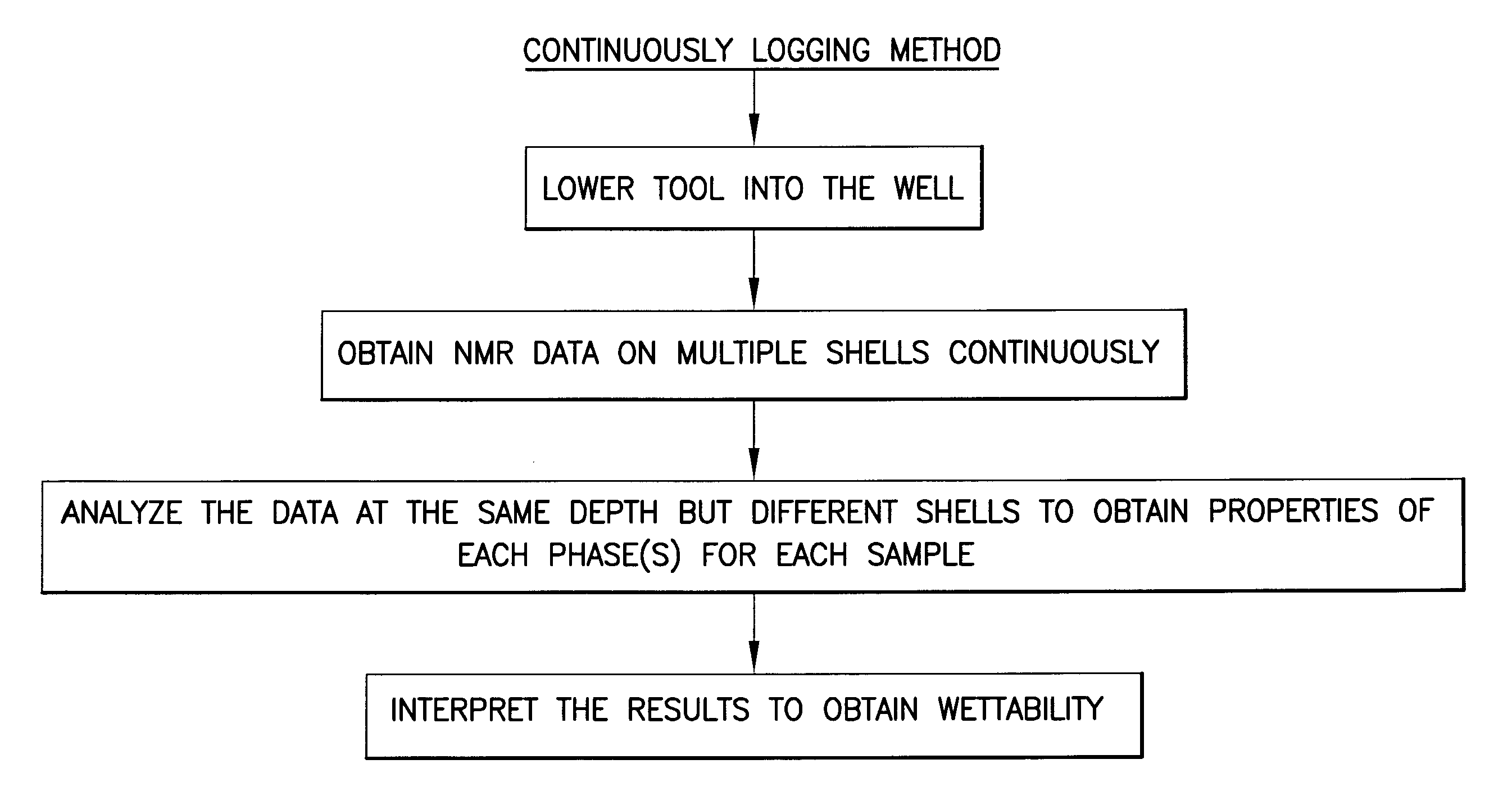Continuous wettability logging based on nmr measurements
a technology of wettability logging and nmr, applied in the direction of nmr measurement, reradiation, instruments, etc., can solve the problems of inability to reliably measure the average wettability index, time-consuming measuring wettability, and inability to accurately measure wettability
- Summary
- Abstract
- Description
- Claims
- Application Information
AI Technical Summary
Benefits of technology
Problems solved by technology
Method used
Image
Examples
case b
decreases as saturation increases;[0054] Oil always occupies a fixed fraction of the total surface, Σo=const., and Σw=const. Thus, as water saturation increase,
1T2o
increases and
1T2w
case c
decreases;[0055] Oil surface contact is proportional to oil saturation. Thus,
1T2o
case d
will remain constant but at a value elevated from the bulk value; and[0056] Oil always wets the total surface, this is fully oil-wet. Then,
1T2w
is constant at the bulk value.
1T2o
will decrease as oil saturation increases.
The cases B and C represent partial wetting by oil and water. The four cases are illustrated in FIG. 1. Any combination of these four scenarious, such that they represent different fluid configurations determined by the fluid rock interations.
[0057]Two features of the MRScanner are specifically important for the wettability determination: one is the ability to separate oil and water signals, the second is the ability to obtain signals at different depths (DOI), and thus different saturations (e.g. due to invasion). As a result, reliable in situ measurement of oil and water T2 for different saturations can be obtained in order to plot on a figure similar to FIG. 1. From such plot, one may first determine the essential fluid configuration in the formation and then the w...
PUM
 Login to View More
Login to View More Abstract
Description
Claims
Application Information
 Login to View More
Login to View More - R&D
- Intellectual Property
- Life Sciences
- Materials
- Tech Scout
- Unparalleled Data Quality
- Higher Quality Content
- 60% Fewer Hallucinations
Browse by: Latest US Patents, China's latest patents, Technical Efficacy Thesaurus, Application Domain, Technology Topic, Popular Technical Reports.
© 2025 PatSnap. All rights reserved.Legal|Privacy policy|Modern Slavery Act Transparency Statement|Sitemap|About US| Contact US: help@patsnap.com



